14 Rare Depression Glass Finds That Can Be Worth Hundreds
Dating back to the Great Depression era, Depression Glass was first produced in the early 1930s to lift spirits during tough economic times. Made in cheerful colors and simple patterns, these pieces were affordable and widely distributed across America. Decades later, they have become collector favorites for their delicate designs and historical appeal. What was once an everyday household item now holds remarkable value in the world of antiques. If you are curious about collecting or rediscovering forgotten treasures, these glass pieces are a beautiful place to start.
This post may contain affiliate links, which helps keep this content free. Please read our disclosure for more info.
Royal Lace Pattern Cobalt Blue by Hazel-Atlas
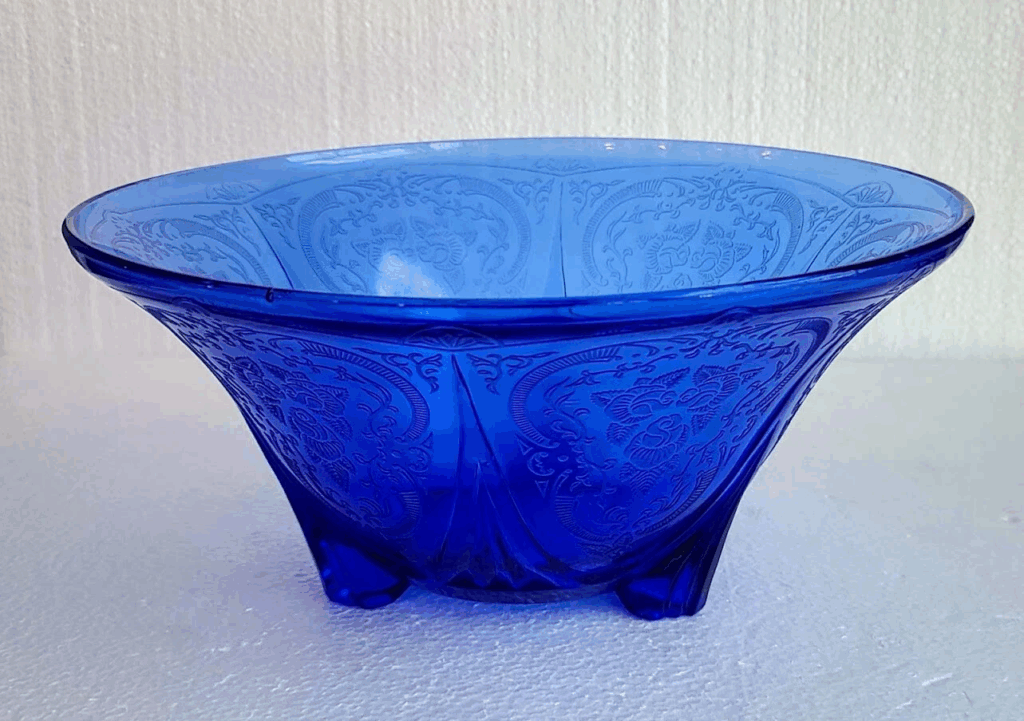
Produced between 1934 and 1941, the Royal Lace pattern by Hazel-Atlas is one of the most admired Depression Glass collections. Its deep cobalt blue shade and detailed lace-like designs made it stand out during a time of simple tableware. The set includes plates, tumblers, and serving pieces that are now hard to find in perfect condition. Collectors appreciate its clarity and durability, which have kept many pieces looking new even after decades. Today, a single plate or bowl in excellent condition can sell for $150 to $400 depending on rarity.
This pattern’s charm lies in its brilliant color and distinctive floral border that reflects light beautifully. Many collectors say the cobalt tone makes it a centerpiece in display cabinets. Complete sets are increasingly difficult to find, and that drives up their market value. Reproductions exist, but original pieces can be identified by their slightly heavier feel and rich hue. For serious collectors, Royal Lace remains one of the most prized patterns from the Depression era.
Mayfair Open Rose Pattern Pink by Anchor Hocking
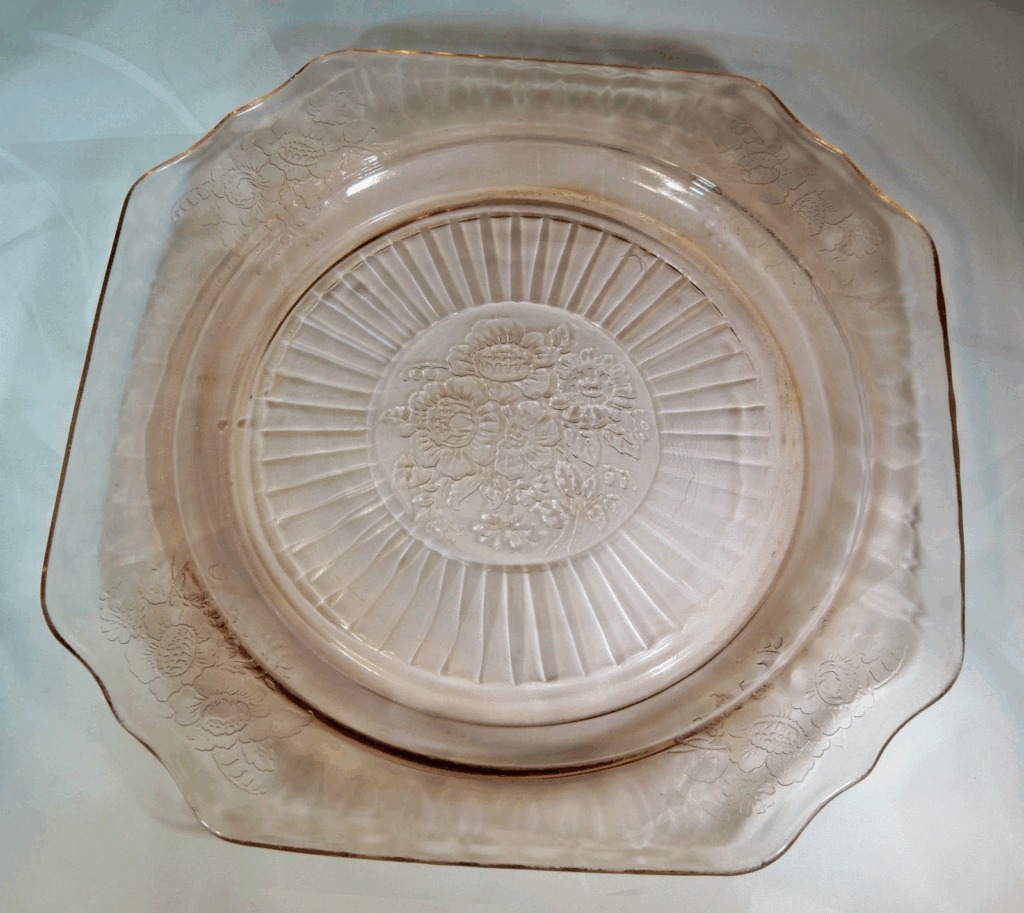
First introduced in 1931, the Mayfair Open Rose pattern is recognized for its delicate floral design and soft pink color. Produced by Anchor Hocking, these pieces were popular household items sold in five-and-dime stores. While they were once common, intact sets have become rare due to wear over time. Collectors value its light pink tone that glows under natural light. Depending on the piece, market prices often range from $100 to $350.
Its appeal comes from the nostalgic connection to American homes during the Depression. The combination of affordability and artistry made it memorable then and desirable now. Larger items such as pitchers and cookie jars are the most valuable due to their scarcity. Because of frequent breakage, complete sets are almost impossible to find. Collectors cherish Mayfair as one of the most recognizable and romantic patterns of its time.
American Sweetheart Monax White by MacBeth-Evans
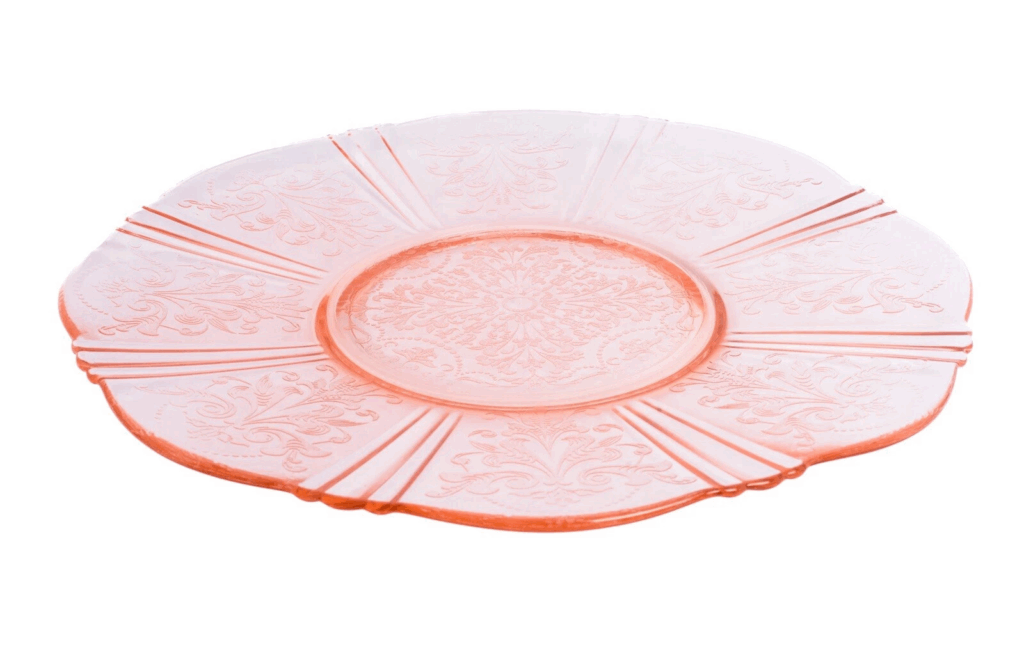
Produced between 1930 and 1936, American Sweetheart in Monax white glass remains one of the most elegant Depression Glass designs. The delicate pattern features flowing curves that add charm to every piece. The opaque milky hue gives it a porcelain-like look that appeals to collectors. It was often used for serving ware and tea sets, both of which are now highly sought after. A single serving bowl can fetch around $200 to $400 depending on condition.
Collectors treasure this line for its fine craftsmanship and timeless simplicity. Its lightness makes it fragile, so undamaged items are rare. Authentic pieces display a slight iridescence that enhances their beauty under light. The pattern’s romantic name and gentle appearance make it a favorite among antique enthusiasts. Many display it as both a decorative and historical centerpiece in their homes.
Princess Pattern Green by Hocking Glass Company
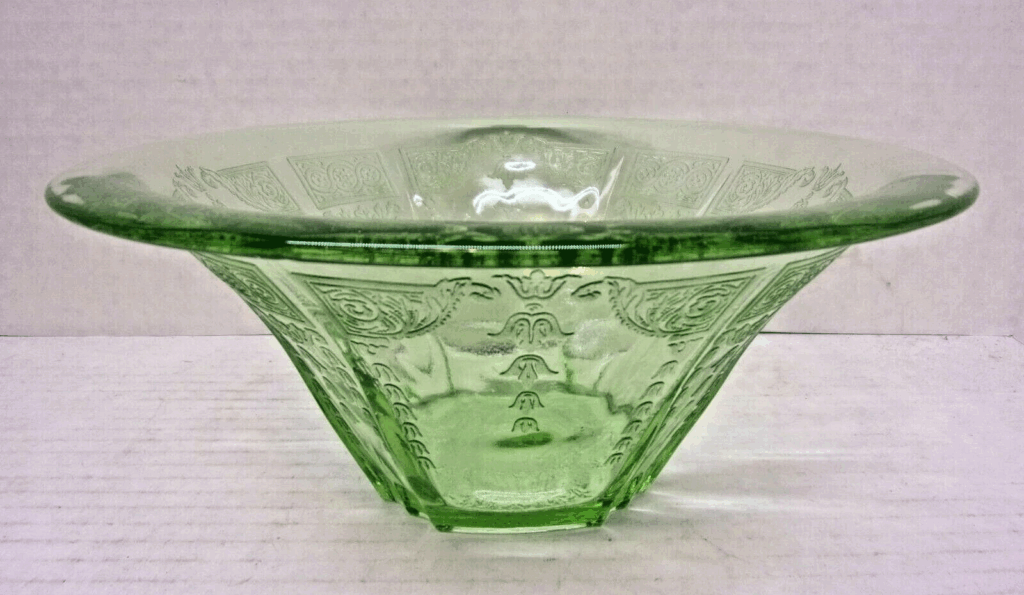
Introduced in 1931, the Princess pattern features geometric shapes and a strong Art Deco influence. Produced by Hocking Glass, it came in several colors, though the green version is the most collectible. Many of these pieces were distributed through promotions and grocery giveaways, which made them widely available at the time. However, surviving complete sets have become scarce due to fragility. Today, individual pieces can sell between $100 and $250.
Collectors admire the crisp designs and sturdy yet elegant structure of the pattern. The serving platters and covered dishes are especially valued for their craftsmanship. The clean lines and balanced proportions make it an enduring favorite among Depression Glass fans. Genuine Princess items often show slight variations that confirm their authenticity. Owning one provides both beauty and a glimpse into 1930s household life.
Royal Ruby Pattern Deep Red by Anchor Hocking
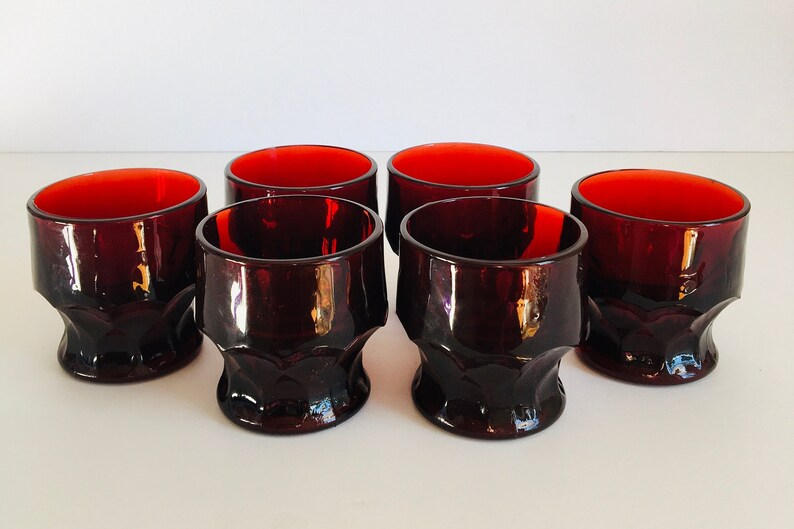
Produced beginning in 1938, Royal Ruby glass introduced a striking red tone to the Depression Glass scene. These pieces were elegant yet affordable, ranging from vases to drinking glasses. The deep red color was created by adding gold oxide, making it a unique achievement during that era. It became popular as decorative dinnerware that reflected light beautifully on tables. Depending on the item, current prices range from $120 to $400.
Collectors value this series for its richness of color and durability. Unlike other Depression Glass types, Royal Ruby was slightly thicker, allowing many pieces to survive intact. The brilliant red shade adds a pop of color to any vintage display. Larger serving pieces and intact sets are especially desirable. Its timeless charm continues to appeal to collectors and decorators alike.
Cherry Blossom Pattern Pink by Jeannette Glass
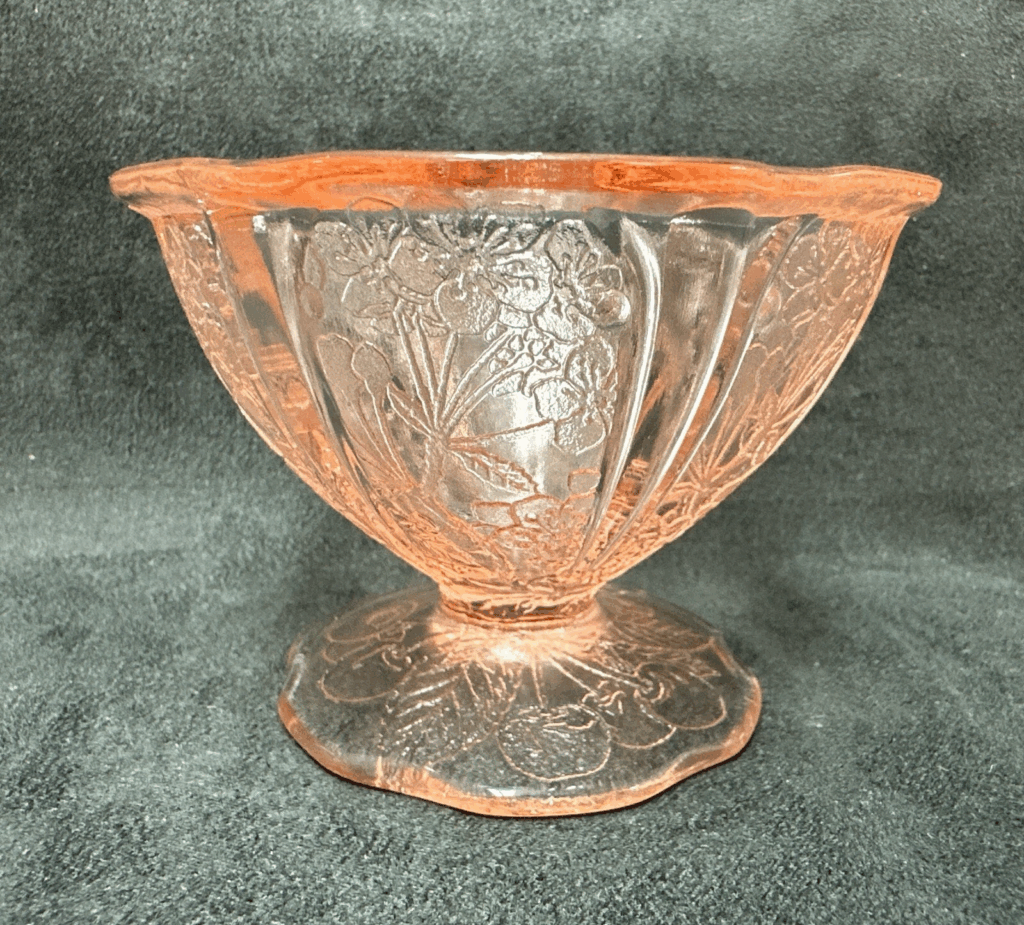
Jeannette Glass produced the Cherry Blossom pattern from 1930 to 1939, featuring delicate flowers embossed into each piece. Its soft pink tint and detailed motifs made it a household favorite during its time. The collection includes plates, bowls, and even sugar shakers, which are now difficult to find in good condition. Many items were used daily, so pristine examples are highly collectible. Depending on rarity, pieces can reach $150 to $500 in today’s market.
This design holds sentimental value as it symbolizes beauty and comfort during challenging years. The raised floral pattern catches light beautifully, making each piece stand out. Authentic pieces have a slightly frosted look that differs from reproductions. Collectors often display them alongside clear Depression Glass to highlight the detail. It remains one of the most recognized and beloved patterns of the period.
Aurora Pattern Pink by Hazel-Atlas
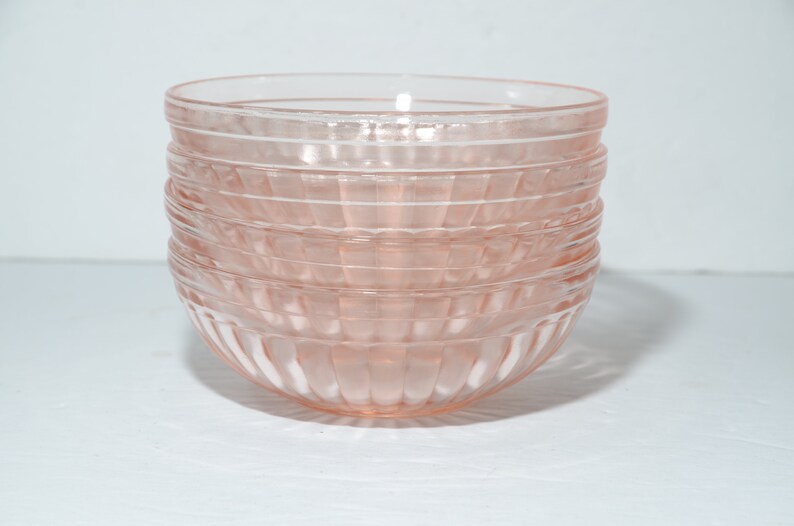
Introduced in 1937, the Aurora pattern was among the last Depression Glass designs made before production declined. The pattern features a sunburst motif that sparkles under light, especially in its soft pink color. Due to its short production run, pieces are difficult to find today. Collectors admire its balance of simplicity and elegance that fits both vintage and modern displays. A complete set can command $200 to $350 or more.
Because it was one of Hazel-Atlas’s final creations from that era, the pattern holds historical value. The smooth glass finish and raised design reflect the artistry of 1930s production. Smaller items such as sherbet dishes are often easier to find than larger serving bowls. Condition plays a major role in pricing since chips are common. Aurora remains an understated yet valuable gem in Depression Glass history.
Patrician Spoke Pattern Amber by Federal Glass
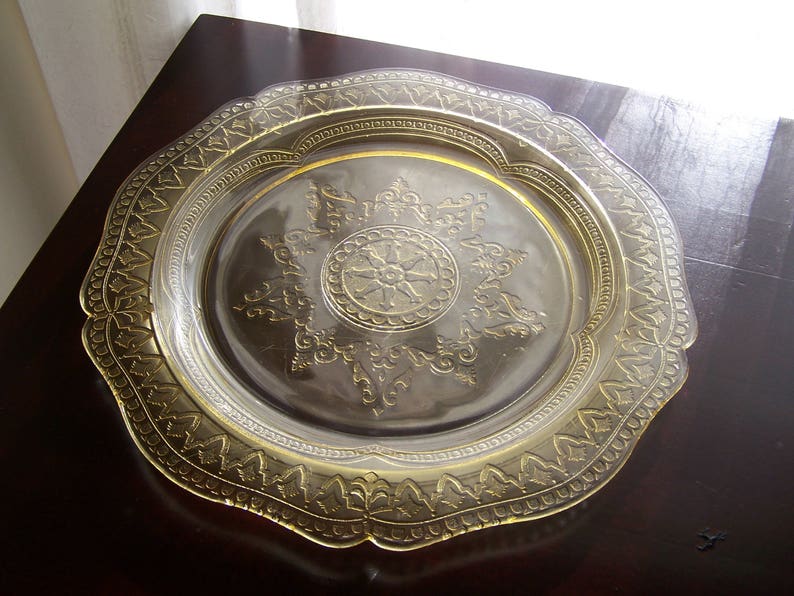
The Patrician pattern, often called Spoke, was produced between 1933 and 1937 by Federal Glass. It features an intricate circular motif that resembles a wagon wheel. The amber shade gives it a warm tone that adds depth to any display. These pieces were distributed in grocery stores, which makes surviving full sets rare. Market value typically falls between $100 and $300 depending on completeness and condition.
Collectors appreciate its versatility and the way the amber color glows under light. The dinner plates and serving bowls are especially sought after due to limited production. Because many items were everyday dishware, finding unchipped examples can be challenging. Authentic pieces are slightly heavier than reproductions and have crisp, well-defined edges. Patrician pieces add vintage character to any glassware collection.
Block Optic Pattern Green by Hocking Glass
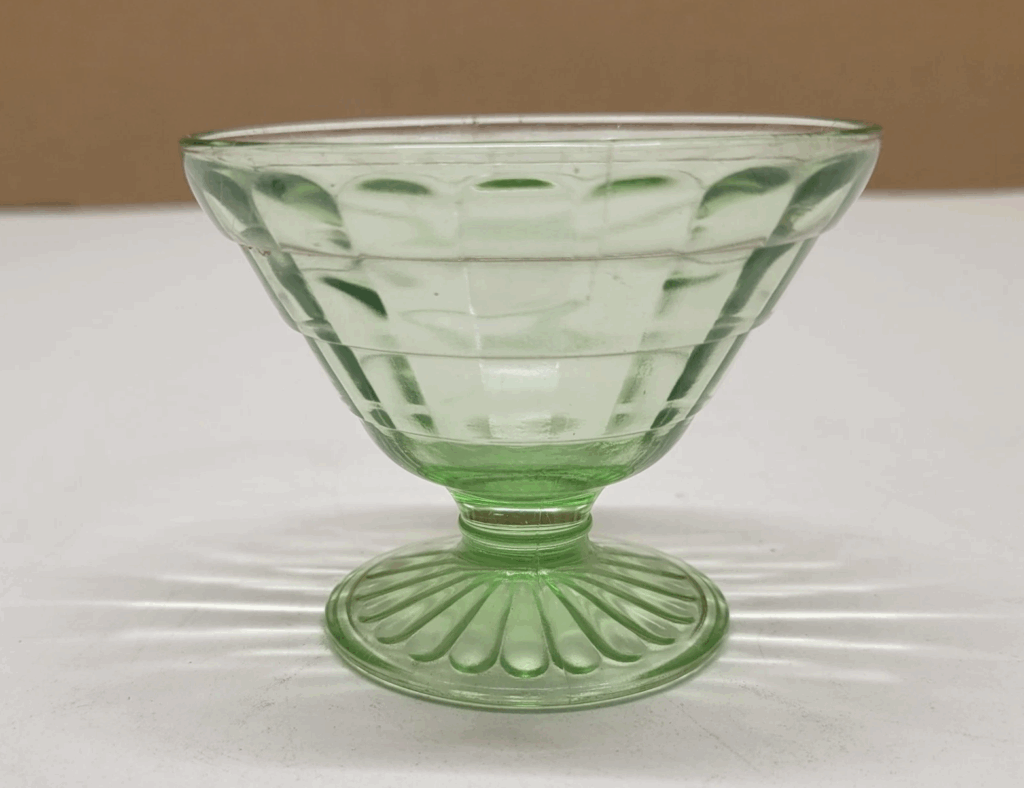
Released from 1929 to 1933, the Block Optic pattern displays a distinct grid texture that catches and reflects light. The design gives each piece a three-dimensional look, especially in green glass. Because of its clean lines and visual depth, it has become one of the most collected Depression Glass patterns. The short production span makes authentic sets rare. Values today range from $80 to $250, depending on condition.
Collectors like this pattern for its simplicity and symmetry, which represent early modern design trends. It includes a range of pieces from tumblers to serving dishes. Larger serving bowls are particularly prized due to breakage over time. Genuine items have sharp, well-pressed edges and a rich hue. The Block Optic remains a classic that blends nostalgia and beauty in one collection.
Florentine Pattern Yellow Poppy by Hazel-Atlas
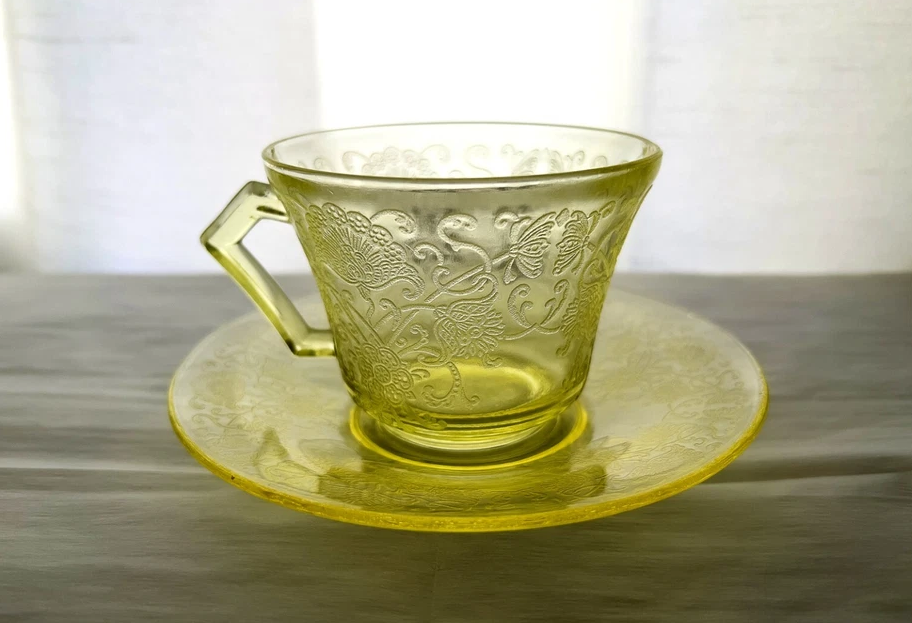
Produced from 1932 to 1935, the Florentine Poppy pattern features delicate raised flowers and scrollwork. The bright yellow color adds warmth and cheer to dining tables, which was uplifting during difficult times. These pieces were often used as promotional giveaways, which helped them spread widely across households. Today, perfect-condition pieces are scarce due to their fragility. Prices typically range from $120 to $400.
Collectors love the sunny hue and intricate floral details that catch the light beautifully. The serving plates and handled cups are especially popular among antique enthusiasts. Because the pattern was produced in multiple shades, identifying authentic yellow Florentine pieces requires careful attention. The charm of this line lies in its ability to bring a vintage touch to any kitchen display. It remains a bright reminder of Depression-era artistry.
Georgian Pattern Cobalt Blue by Federal Glass
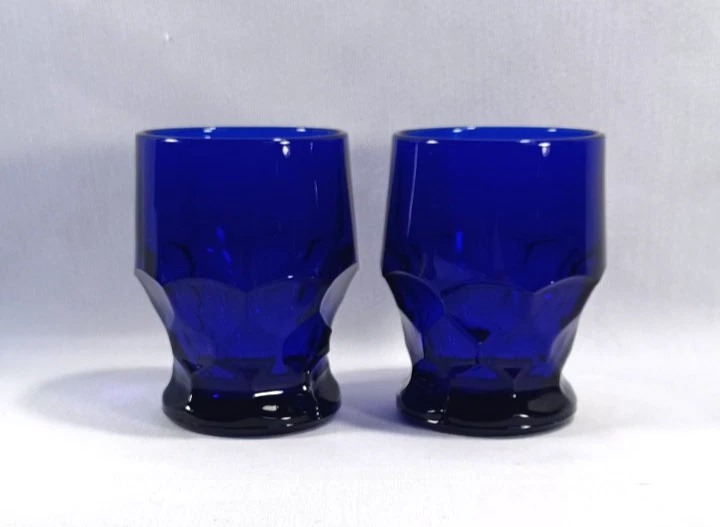
The Georgian pattern by Federal Glass appeared in the 1930s and quickly became a household favorite. Its bold geometric shapes and deep cobalt blue color made it stand out among pastel-toned Depression Glass. The pieces were sold in sets and through promotional programs, but full sets have become increasingly rare. The unique texture and durability give them collectible appeal today. Individual pieces are often valued between $150 and $350.
Collectors admire its solid weight and vibrant hue that reflects beautifully in natural light. The pattern’s pressed design gives it a tactile feel that adds depth to any display. Because of frequent imitation, identifying originals requires attention to the thickness and shine. The combination of strength and beauty keeps Georgian pieces in high demand. It is one of the most visually striking examples of Depression Glass.
Dogwood Pattern Pink by MacBeth-Evans
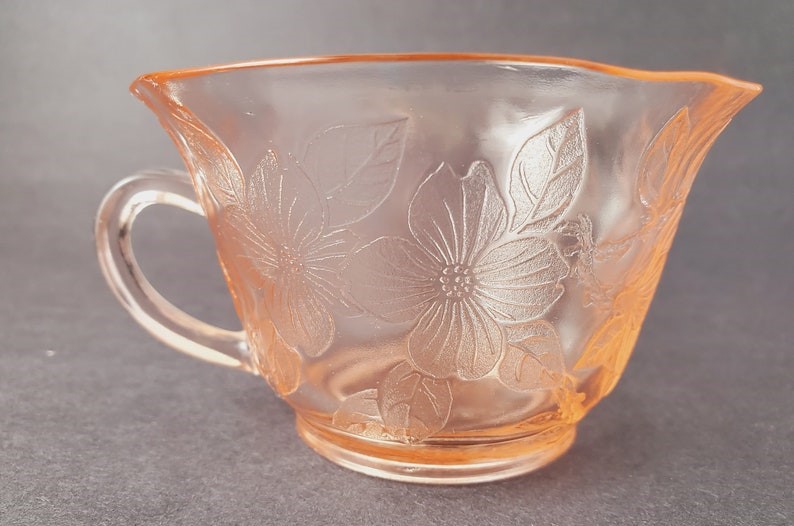
Introduced in 1929, the Dogwood pattern features graceful raised flowers and elegant curves. It was available mainly in pink and crystal variations, both highly collectible today. These items were thin and fragile, which adds to their rarity. The pattern’s name and floral design give it timeless charm among vintage glass fans. Depending on rarity, prices range from $120 to $400.
Collectors enjoy its romantic design that captures the spirit of the late 1920s. Serving bowls and tumblers are particularly prized due to their limited survival rate. Authentic pieces display a faint opalescent glow when held to the light. It blends simplicity and elegance, which makes it ideal for both display and light use. Dogwood pieces remain a symbol of delicate craftsmanship from the Depression years.
Sharon Cabbage Rose Pattern Pink by Federal Glass
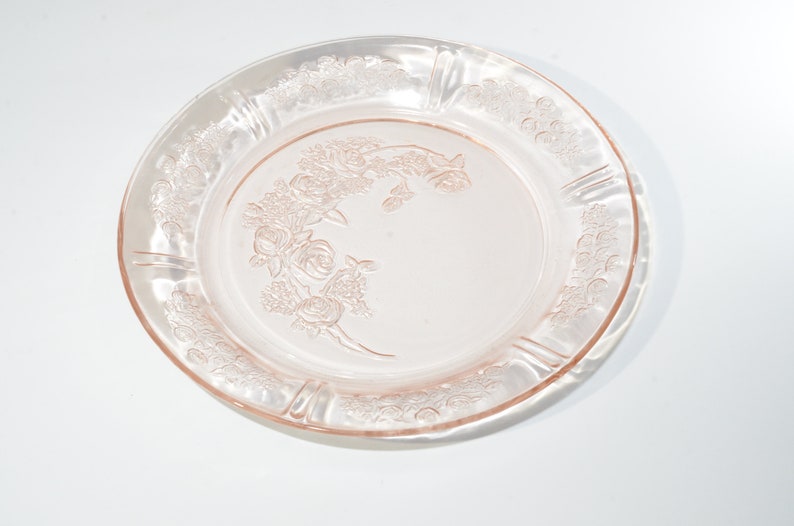
The Sharon Cabbage Rose pattern was produced from 1935 to 1939 and became a favorite among households for its floral charm. The soft pink color and embossed roses create a romantic look that remains popular among collectors. While it was widely distributed, pieces in mint condition have become scarce. Complete sets are especially valuable when no chips or scratches are present. Individual items now sell between $100 and $300.
Its popularity lies in the raised floral pattern that looks beautiful on both small and large pieces. The detail and clarity of the glass reflect Federal’s best production techniques. Because the pattern was heavily used, perfect examples are difficult to find. Collectors appreciate how it represents everyday beauty from a difficult time in history. Sharon’s enduring charm makes it one of the standout pink glass patterns.
Madrid Pattern Amber by Federal Glass
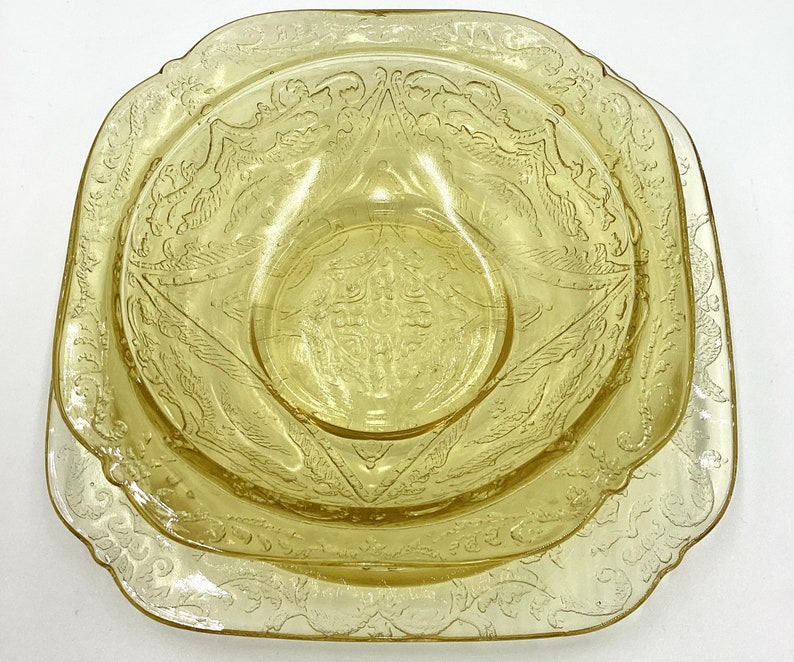
Produced between 1932 and 1939, the Madrid pattern by Federal Glass is known for its scroll and floral details. The warm amber color gives each piece a vintage elegance that remains sought after. It was produced in various tableware shapes, including serving bowls, plates, and cups. Many were used daily, leading to limited surviving sets. Market values range from $120 to $300, depending on size and quality.
Collectors are drawn to its decorative designs and classic golden hue. Larger serving pieces and complete dinner sets are especially valuable. Authentic pieces show clean, pressed glass lines and a consistent color tone. It has become a collector favorite for its balance of history and beauty. Madrid remains one of the finest examples of Depression Glass artistry.
Collectors value these finds for their color, detail, and enduring charm. Whether displayed or passed down, they remain treasured symbols of artistry and perseverance.
This article originally appeared on Avocadu.
